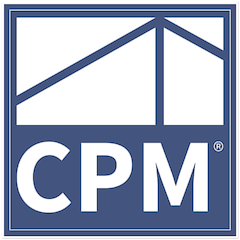The Advantages of Investing in Real Estate: A Comprehensive Guide

Investing in real estate has long been heralded as one of the most reliable and lucrative avenues for wealth accumulation and financial security. While there are myriad investment options available today, real estate stands out due to its unique advantages, potential for appreciation, and ability to generate steady income. This blog delves into the many benefits of real estate investment, with a particular emphasis on residential real estate and, more specifically, single-family rentals (SFRs).
The Unique Advantages of Real Estate Investing
1. Tangible Asset
Real estate is a tangible asset, providing a sense of security and stability that is often absent in stocks or bonds. Investors can physically see and touch their investment, which can be reassuring during times of market volatility.
2. Steady Income Stream
One of the primary appeals of real estate is the potential for a steady income stream through rental income. Well-chosen properties in desirable locations can provide consistent cash flow, often exceeding initial investment expectations.
3. Appreciation Potential
Real estate typically appreciates in value over time. While market fluctuations are inevitable, the long-term trend for real estate prices has been upward. This appreciation, combined with rental income, can significantly enhance an investor’s return on investment (ROI).
4. Leverage Opportunities
Real estate allows for leveraging, where investors can use borrowed capital to increase the potential return of an investment. This means that with a relatively small initial investment (down payment), investors can own and control a much larger asset.
5. Tax Benefits
Real estate investments come with several tax advantages. These can include deductions for mortgage interest, property depreciation, and operating expenses. Moreover, capital gains on real estate can be deferred through 1031 exchanges, further enhancing the tax efficiency of real estate investments.
6. Hedge Against Inflation
Real estate acts as an effective hedge against inflation. As the cost of living rises, so do rental prices and property values. This ensures that the real value of the investment is maintained over time, preserving and potentially increasing the investor’s purchasing power.
7. Diversification
Including real estate in an investment portfolio provides diversification, reducing overall risk. Real estate often behaves differently from stocks and bonds, and its inclusion can balance the performance of an investment portfolio, especially during market downturns.
8. Control Over Investment
Unlike other investment avenues where the investor has little to no control over the performance, real estate offers a hands-on approach. Investors can make strategic decisions about property improvements, tenant selection, and rent pricing to optimize their returns.
Types of Investments in Residential Real Estate
1. Single-Family Rentals (SFRs)
Single-family rentals involve purchasing individual houses and renting them out to tenants. SFRs are particularly attractive to investors for several reasons:
- High Demand: Single-family homes are always in high demand, particularly among families looking for long-term rental options.
- Stable Tenants: Tenants in single-family homes tend to stay longer, reducing turnover rates and associated costs.
- Appreciation Potential: SFRs often appreciate faster than multi-family properties due to their desirability and limited supply.
- Ease of Financing: Mortgages for single-family homes are easier to obtain compared to multi-family or commercial properties.
2. Multi-Family Properties
These include duplexes, triplexes, and apartment buildings. Multi-family properties can provide higher rental income due to multiple units but also come with higher management demands and potentially higher vacancy risks.
3. Condominiums
Condos can be a cost-effective entry point into real estate investing, often requiring lower initial capital compared to single-family homes. However, they come with homeowners association (HOA) fees and rules, which can impact profitability and control.
4. Townhomes
Townhomes offer a blend of single-family homes and condominiums. They often attract renters looking for a compromise between the two, providing good appreciation potential and stable rental income.
Advantages of Single-Family Rentals
1. Strong Market Demand
Single-family rentals cater to a broad demographic, including young families, professionals, and retirees. This wide appeal ensures a consistent demand, minimizing vacancy risks and ensuring stable rental income.
2. Greater Tenant Stability
Tenants in single-family homes are often seeking long-term accommodation. Families, in particular, prefer stability for the sake of their children’s schooling and community ties. This stability reduces turnover rates and the associated costs of finding new tenants.
3. Easier Property Management
Managing single-family homes can be less complex than managing multi-family properties. Each home is independent, reducing the likelihood of widespread maintenance issues and conflicts between tenants.
4. Higher Appreciation Rates
Historically, single-family homes tend to appreciate more rapidly than other types of residential real estate. This is due to their appeal to both investors and owner-occupiers, driving demand and pushing up prices.
5. Financing Flexibility
Financing options for single-family homes are more diverse and accessible. Investors can take advantage of conventional mortgages, FHA loans, and even VA loans in some cases, allowing for lower down payments and favorable interest rates.
Maximizing Returns with Single-Family Rentals
To maximize returns on single-family rentals, investors should focus on the following strategies:
- Location, Location, Location: Invest in areas with strong economic fundamentals, good schools, and low crime rates. These factors drive demand and ensure long-term appreciation.
- Thorough Tenant Screening: Implement a rigorous tenant screening process to ensure reliable, long-term tenants who will take good care of the property.
- Regular Maintenance: Proactive maintenance prevents small issues from becoming costly repairs, preserving property value and tenant satisfaction.
- Strategic Renovations: Invest in renovations that enhance the property’s value and appeal without overcapitalizing. Focus on kitchens, bathrooms, and curb appeal.
- Professional Management: Consider hiring a property management firm to handle day-to-day operations, tenant relations, and maintenance. This allows investors to focus on growing their portfolio while ensuring their properties are well-maintained.
Real estate investment, particularly in single-family rentals, offers numerous advantages, from steady income and appreciation to tax benefits and diversification. By understanding the unique benefits and implementing strategic investment and management practices, investors can build a robust and profitable real estate portfolio. Whether you are a seasoned investor or just starting, the enduring appeal and stability of real estate make it a compelling choice for achieving long-term financial success.
Share this post













